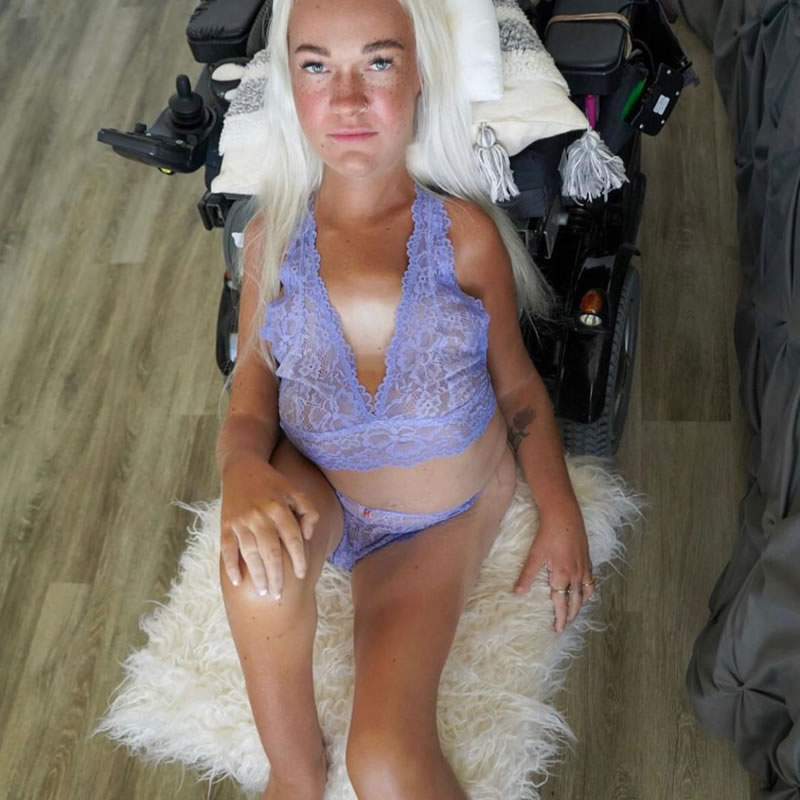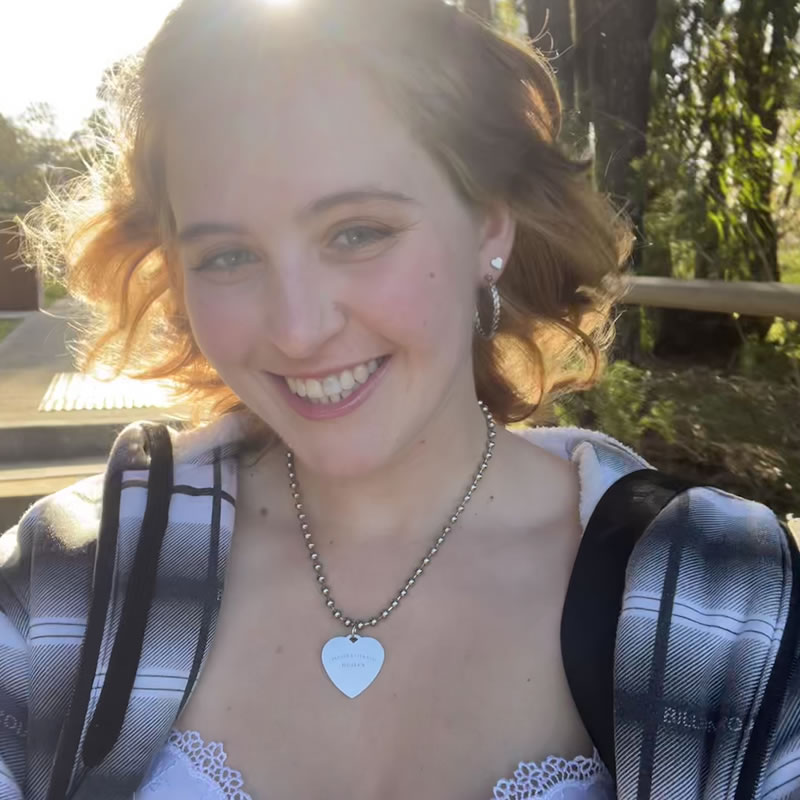Sex is for everyBODY - Asha M.


Description:
This artifact is an Instagram photo taken of and by Alex Dacy. She has spinal muscular atrophy and publicly posts about it to educate others about disability as well as to demonstrate that people with disabilities can feel sexy and participate in sex, highlighted in this instance through wearing lingerie.
Significance:
I chose this artifact because I rarely see representations of physically disabled bodies in media, especially of a sexual nature. I also chose it to confront the stereotypes and assumptions viewers may hold about people with disabilities such as that they are asexual or ‘cannot have sex’ (Tepper 2000). I think it is important for viewers to see the intersection of disability and sex in a positive light as most humans are sexual beings, which I believe should be celebrated. Additionally, this photo is empowering as Alex is proudly showing her disability and sexuality without shame, challenging the narrative that disabled bodies need to be ‘fixed’ and are not sexy.
I am very privileged due to being middle class, white and heterosexual. While a person with a disability could have all these same identity factors, in having a disability as part of their identity, they face marginalisation due to societal discrimination and ableism. Therefore, I chose a photograph of a person with a similar identity and a disability, to make viewers think how much our perspective of someone may change when we notice they have a disability. I hope this artifact invites viewers to consider specifically how society’s treatment of people with disabilities might impact on their sex lives. In my experience, navigating sexual relationships comes with its challenges as well as great experiences. I recognise that having sex with a disability carries its own unique challenges and experiences too.
Positionality:
I am interested in learning about Disability and Sex because I am passionate about quality sex education and breaking taboos. As Tepper (2000) describes, sex education in our culture is often abstinence based, excluding vital discussions around safe sex, consent, and pleasure. I also care deeply about the rights, including sexual rights, of people with disabilities. I believe disability and sex are not spoken about enough. I have wanted to strengthen my knowledge of sexology and sexual health for my own understanding and to support friends and clients in the parts of their life that many avoid speaking about. However, my studies have either ‘danced around’ the topic of sex or never considered centering people with disabilities in the conversation. Hence, now that I have learnt more about disability and sex, I can use the information to spread awareness and help reduce some of the barriers to sex that many people with disabilities experience.
As someone living with mental illness, I also feel that I can relate to what living with a disability is like for some. For example, drawing from spoons theory, I struggle with not having enough spoons (energy) to complete daily activities and this can extend to sex (Miserandino 2003). In addition, expressing my sexuality has always been made harder by the shame placed on women who engage in sexual activities especially masturbation. Therefore, I am also interested in disability and sex as normalising, these topics makes me feel less ashamed about having and talking about sex.
Impact:
The “gem” I am taking away from this subject is how incredibly difficult society makes it for people with disabilities to express their sexualities, and thus, how essential it is to create a more educated and accepting society. When I first thought about barriers to sexual expression for people with disabilities, I assumed the main barrier would be the person’s body. However, as O’Shea et al. (2020) explains, the main barriers come from the society we live in which can lead to social isolation, low self-esteem and missing out on sex education, all of which may hinder sexual expression.
Learning about disability and sexuality also made me rethink what constitutes sex. Therefore, another “gem” is that there are so many ways to have sex beyond the heteronormative lens involving penetration and male orgasm. Sex can involve varied order, positions and devices, described by MacHattie et al. (2009) in their guide to sexual pleasure for people with disabilities. The guide suggests using hands-free sex toys and a fleshlight for males with limited hand function. I think having accessible sex toys available is a valuable step in creating a society that is more inclusive of people with disabilities. Lee et al. (2017) emphasises how it is essential for social workers to feel comfortable and confident in discussing these sexual topics. I think this subject has helped me improve at this, which will be valuable in future to appropriately respond to clients’ sexual concerns and thus their sexual wellbeing ( O’Shea et al. 2020 ) .
Wish List:
I hope my artifact inspires viewers to recognise people with disabilities as people who can make choices about their own lives and sexual desires. Just like myself and majority of viewers, most people with disabilities are sexual beings and want to experience pleasure and intimacy in their lives. I think even the fact that Alex’s lingerie does not quite fit her shows the lack of inclusion from society for people with disabilities when it comes to sexual expression.
Therefore, I also want my viewers to advocate for the rights of people with disabilities to increase inclusivity but also especially in relation to rights to sexuality and sexual expression. As part of this, I would like those viewing my artifact to keep informed about current issues affecting people with disabilities. As many people have social media, my viewers can follow people with disabilities like Alex and can use their platform to spread greater awareness. I have learnt a significant amount about both disability and sex, and their intersection, through openly discussing both with my best friend who has Tourette Syndrome. I strongly believe people with lived experiences of disabilities like her should be central to guiding sexual movements and conversations.
As an individual and a future social worker, I will try to use my voice to elevate the voices of people with disabilities and to provide a safe environment for clients to speak about sex. I hope the viewers will also think how they can do this in their own lives.
Comments are closed.



One Comment
Asha, i like to commend you on writing this posting. I specially like how you see disablity and how you will be utilizing your learning from this course. As I read your post I was able to feel your personal empathy on the topic, I think connection is valuable when dealing with another person.